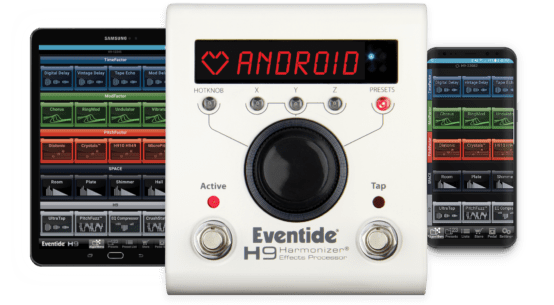
Audio software creator Impact Soundworks has released Mediation
Mediation — a collection of acoustic mallet, gong, and glass sounds, creatively combined with a Kontakt -based additive synthesizer allowing users to craft a variety of evolving and subtle tones, perfect for film scoring applications alongside ambient and atmospheric music creation.
Mediation is a sampled virtual instrument library for Native Instruments’ industry-standard Kontakt platform; it combines a variety of unique acoustic sound sources — such as Aquarion, Boltophone, Brass Urn, Crotales, Gamelan Ensemble, Glass Gong, Glockenspiel, Kenong, Koto Harmonic Pluck, Marimba, Muted Prayer Bowl, Pipe Harp, Pot Lids, Rubber Mallets, Shou Drum Brushed, Stonaphone, Toy Piano, Tubular Bells, Vibraphone, Violin Pick, and Waterglasses (hand-picked from other critically-acclaimed Impact Soundworks libraries like Curio, Momentum, and Resonance, along with some new material) — with an additive synthesis layer, representing the first of its kind in a Kontakt instrument.
Though the Mediation library itself includes in-depth synth parameters with modulation tweaking aplenty, average users do not need to be an additive synthesis expert to enjoy it. Included are a wide variety of presets to affect and inspire; indeed, adjusting basic parameters of each sound is very easy, thanks to the always-admirable design work of Impact Soundworks Lead Designer Andrew Aversa and his sterling scripting team (Mario Krušelj and Nabeel Ansari).
As such, Mediation’s gorgeous GUI (Graphical User Interface) is as easy on the eye as it is easy to use. Duly divided into two primary layer panels, the left one contains controls for the Acoustic Layer — centred around a Soundsource menu (revealing all available acoustic sound sources) with associated knobs for adjusting its VOL (volume), PAN(panning), TUNE (tuning), and TRANS (transposition), while additive synthesis- centric controls reside in the right layer.
Like its acoustic counterpart, the so-called Synthetic Layer features a row of straightforward settings, starting with a Waveform menu for selecting one of three (sine, sawtooth, or square) waveforms alongside associated knobs to adjust its VOL and PAN. Four more controls are dedicated to Inharmonicity — the degree to buy genuine tramadol online uk which the frequencies of overtones (or partials) depart from the fundamental frequency (harmonic series). Saying that, the odd and even knobs set the detuning of the odd and even partials — perfect for creating more gong-like tones. The ‘leaf’ button initiates an Eco Mode, preventing triggering of partials that are initially silent, while the ‘tuning fork’ (Pure Partials) button adjuststhe base tuning of all partials to just/pure intonation.
The Synthetic Layer’s central section houses VOL and PAN tables for the partials. Users can draw in their own curves for one of two states (STATE 1 and STATE 2) and even morph between those states by activating the morph button. Beyond that, the ‘gearwheel’ button brings into play another menu of preset options while the ‘dice’ (Randomize) buttons randomise the curves for each table. In short, 24 partials can be adjusted in real-time, along with per-partial panning!
Both layer panels also feature filter and envelope controls for further shaping the sound sources. There are envelope controls for PITCH, FILTER and AMP, including: A (attack), H (hold), D (decay), S (sustain), and R (release) sliders, a VEL (velocity) knob, a CURVE control, and an AMT (amount) knob (for PITCH and FILTER envelopes only).
Mediation includes the company’s trademark easy-to-use FX Rack — featuring EQ, compressor, transient, designer, scream, bitcrusher, delay, reverb, and limiter — that also creatively connects to the Mod Matrix, itself allowing for highly-flexible routing of modulators — such as generated LFOs (Low Frequency Oscillators) and MIDI CC (Continuous Controller) messages — to all the FX controls.
Note that Meditation requires the full version of Native Instruments Kontakt (Version 5.5.2 or higher).
Samplecast’s Reuben Cornell’s short overview video of Mediatation:
To stay up to date on more audio news, sign up to our monthly newsletter to make sure you don’t miss out of news as well as our reviews and interviews.
We are also running a Patreon campaign to help support our team and help us bring you more awesome content at even higher quality!




